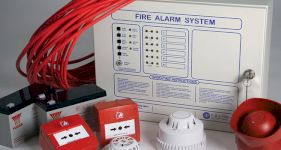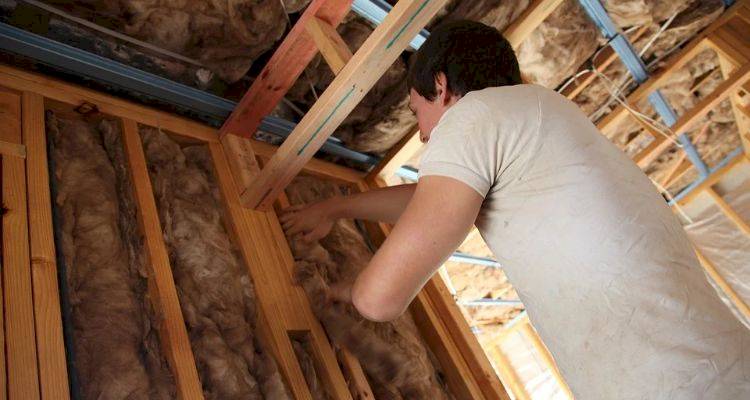Cost to Build a Pond
- The average pond installation costs around £3,000 in the UK.
- It typically takes between 1 and 5 days to build a pond.
- A breakdown of pricing details for different pond sizes and types.
- How long pond construction takes, and an overview of what’s involved in the process.
- How to find and hire a pond installer near you.
Looking for pond installation prices?
The average price of pond building is £3,000, but prices vary based on the size and type of pond you want.
In this guide, we'll look into pond costs for different sizes and types, as well as how to build a pond, and the building regulations you need to be aware of for pond installation.
Ready for a pond building quote?
More than 1 million homeowners across the UK use MyJobQuote to find tradespeople near them every year. Just enter a few details about your project, and get connected with garden pond installers near you for free, no obligation quotes.
Want to learn more about garden pond construction first?
Keep reading!

£3,000
Table of Contents
- How Much Does It Cost to Build a Pond?
- Supply Only Costs
- Additional Pond Installation Costs
- How Much Does Pond Installation Cost? (Labour Only)
- How Long Does Building a Pond Take?
- What Impacts How Much Ponds Cost to Build?
- What's Involved in Building a Pond?
- Can I Build a Pond Myself?
- Building Regulations & Planning Permission for Pond Installation
- Pond Removal Cost
- Hiring Contractors to Build a Pond Checklist
- FAQs
- Sources
How Much Does It Cost to Build a Pond?
As mentioned, the cost of a pond installation will vary depending on the size and type. To have a small garden pond constructed costs between £800 and £1,300.
A medium-sized garden pond is priced at about £2,400 to £3,600, and a large garden pond might cost you between £5,000 and £7,500.
If you want to replace an existing garden pond with a new instalment, this will likely cost several hundred pounds more.
The cost of having a garden pond constructed would depend not only on the type and size of the pond. It would also depend on ease of access and the location of your property since labour prices differ across the UK.
How much would it cost to install a garden pond of about 5x8?
Pond Prices
The table below gives an overview of how much it costs to build different sized ponds in 2025, with a breakdown of the approximate supply and labour costs, too:
| Size/Type | Supply Cost | Labour Cost | Total Cost |
|---|---|---|---|
| Small Pond | £500 – £700 | £300 – £600 | £800 – £1,300 |
| Medium Pond | £1,500 – £2,100 | £900 – £1,500 | £2,400 – £3,600 |
| Large Pond | £3,200 – £4,500 | £1,800 – £3,000 | £5,000 – £7,500 |
If you're upgrading an existing pond, expect the pond costs you're quoted by tradespeople to be higher than this, as excavation and removal of old materials are required.
Supply Only Costs
Let's look at pond installation supply costs. This is part of the total price but excludes the cost of labour, so it relates to a DIY pond cost.
These costs would be especially pertinent if you were to purchase the materials from a retailer directly as part of a DIY job. These are essentially the overall estimated costs of building a pond by yourself:
| Size of Pond | Supply Cost |
|---|---|
| Small Garden Pond | £500 – £700 |
| Medium Garden Pond | £1,500 – £2,100 |
| Large Garden Pond | £3,200 – £4,500 |
Additional Pond Installation Costs
In this section, we'll discuss some added costs you may face upon having a garden pond constructed.
Garden Clearance
When having a garden pond installed, you may consider it a good time to have your garden cleaned and remove waste. This can give your garden a new lease of life, a fitting refurbishment to go with your new garden pond.

The price of garden waste removal would largely depend on the scale of the removal. These are measured in terms of the approximate number of bin bags and the size of the skip.
Here are some estimated garden clearance costs:
- 2-yard skip (20 bin bags) - £70 to £100
- 3-yard skip (30 bin bags) - £75 to £110
- 4-yard skip (40 bin bags) - £100 to £260
- 6-yard skip (60 bin bags) - £120 to £275
- 8-yard skip (80 bin bags) - £160 to £370
- 10-yard skip (100 bin bags) - £180 to £400
- 12-yard skip (120 bin bags) - £220 to £440
- 14-yard skip (140 bin bags) - £230 to £450
New Decking
You may be interested in having garden decking installed. The cost of decking installation can vary greatly, depending on both the size of the decking and the material used.
Let's look at some popular examples and their respective cost:
Softwood:
- Small Garden (15m²) - £1,000 to £1,200
- Medium Garden (30m²) - £1,600 to £2,000
- Large Garden (60m²) - £2,200 to £2,800
Hardwood:
- Small Garden (15m²) - £1,500 to £1,700
- Medium Garden (30m²) - £2,200 to £3,000
- Large Garden (60m²) - £3,400 to £4,200
Composite:
- Small Garden (15m²) - £1,900 to £2,100
- Medium Garden (30m²) - £3,400 to £3,700
- Large Garden (60m²) - £4,900 to £5,400
New Garden Shed
Should you wish to have a new garden shed constructed, the cost will largely depend on the size and type.

Here are some common garden shed prices:
- 6ft x 4ft Budget-friendly Shed on a Simple Slab Base - £600 to £800
- 8ft x 6ft Shed on a Slab Base - £750 to £950
- 12ft x 8ft Large Shed on a Concrete Base - £1,000 to £1,200
How Much Does Pond Installation Cost? (Labour Only)
If you're getting quoted a cost to build a pond by a specialist installer, you should expect labour to account for around 40% of the total price.
The daily labour cost for a garden pond construction is around £300. However, this will vary across the UK — with tradespeople in southern areas typically being more expensive to hire.
The labour cost and timeframes would vary depending on the size and type of pond being built as well as ease of access to the work area. Whether you undertake some work DIY (e.g., excavating the area) would also influence the cost of labour.
How Long Does Building a Pond Take?
The excavation phase would likely take somewhere in the range of half a day to a full day's work. The actual installation of the pond itself would likely last around 2 to 5 days, but it would depend on the size and type of pond being built.
As for the full timeframes of building different-sized ponds, the table below shows how long building different-sized ponds typically takes an experienced professional. If you're thinking of installing a pond as a DIY project, expect it to take a little longer than this!
| Pond Size | Estimated Timeframe |
|---|---|
| Small Garden Pond | 1 – 2 days |
| Medium Garden Pond | 3 – 5 days |
| Large Garden Pond | 6 – 10 days |
What Impacts How Much Ponds Cost to Build?
We'll now take a closer look at the cost-affecting factors of constructing a pond, whether it be the size and type of pond or the location of your property. Ultimately, garden pond prices with the cost of labour and supplies can vary a lot.
Size and Type of Pond
The most important cost factors are the size/type of garden pond. The larger a garden pond is, the higher the supply costs will be. Of course, beyond that, a larger garden pond would take longer to build and would, therefore, bring up the cost of labour if hiring a contractor to perform the work.

Type is relevant too, as, for instance, the type of materials used can come with different supply prices. Pond types could also be categorized based on their design and shape. An ordinary-shaped pond would be more budget-friendly than, say, having a fancy ornamental-styled pond constructed.
Ease of Access
The level of accessibility a professional has to the workspace could also shape your total bill. This is because easier access could make the work easier and faster and thus likely keep labour costs down.
Location of Property
Labour prices are generally above the UK average in the southeast (London is especially known for high labour costs) whereas they tend to be under the national average in Scotland, northern England, and Northern Ireland.
Additional Features
If you wish to have extra features like a water fountain or/and a pump added, this will increase the overall cost of having a garden pond built.
Of course, the prices of these specific features can differ a lot. For example, pond air pump prices/pond filter prices can differ a lot depending on the quality among other factors.
What's the best way to make a new pond look natural?
What's Involved in Building a Pond?
We'll now break down the steps needed to install a garden pond. The methods can vary depending on the size and type of pond. Always follow the manufacturer’s instructions, or if in doubt, hire a professional.
1. Planning and Hiring a Contractor
Plenty of planning must go on into building a pond before any work can get underway. For one, you'll want to decide on how deep the pond should be. In the case of a decorative pond, you'd want a water depth of about 0.6 metres or so. However, if it’s going to feature fish, it's a different story.
If it's going to feature small fish, we'd suggest a depth of about a metre but if it will feature larger fish (e.g., Koi or Carp), then a depth of approximately 1.5 metres would suffice.
You'll also want to decide on the shape/design such as a regular design vs. a fancy ornamental design. Planning would also involve hiring the right contractor for the job, assuming you want someone to build the pond for you. We'll look more at hiring the best person for the job toward the end of this article.
2. Excavation
The first practical stage of a pond installation involves excavating the area. As discussed in the previous step, how deep you dig will depend on the size/type of pond in question. This is the most suited part for DIY work.
Before digging up an area for a pond, the shape of the pond should be marked out with a spray or string. It's best to begin digging at the perimeter and work inwards from there. In some cases, a marginal shelf will be included for plants before the inner deep-water area can be excavated in full.
It's important the sides of the garden pond slope inwards in a gradual manner. This is to avoid soil collapse. In addition, a small perimeter trench could fit around the pond’s top region as a means of stopping the surrounding soil from being saturated by the water.
As touched on, the exact process will differ depending on the size/type of pond among other factors.
What are the most common plants used in garden ponds in the UK and why?
3. Adding the Pond Materials
Once the area is excavated, it’s time to add the pond materials. First of all, pond-liner materials would be needed as a means of creating a water-tight barrier between the inside of the pond and the ground around it.
The options would include relatively cheap materials like plastic or more expensive options such as flexible rubber liners.
Protective underlay should also be added first before you lay liner down to protect against stone damage and root penetration.
Beyond the work discussed so far, the other materials and features can then be added before the water is added to the pond. In many cases, a pond needs a functioning filtration system and a means of air circulation (e.g., a pump).
This would also be very important for the health and well-being of any fish in your pond in most cases. Sometimes, a filtration system will not be needed, but it will depend on the type of pond and the fish being included.
If you have fish, you may want to consider investing in pond netting to protect your fish from large birds.
Can I Build a Pond Myself?
Yes, it’s entirely possible to construct a garden pond DIY but it’s important that a) you have the right skills and knowledge and b) you understand all of the necessary safety steps as well as the elements of constructing a pond that are necessary. If in any doubt, hire a professional.

As discussed, excavation is the most suitable part for a DIY enthusiast, but you may wish to undertake the entire project and this would save you several hundred to several thousand pounds in labour costs, depending on the size and type of the garden pond. The DIY man-made pond prices are one core advantage of building a garden pond by yourself.
Some of the hazards/dangers of building a garden pond include:
- Working with heavy materials
- Tripping or falling
- Building the pond incorrectly*
*An incorrectly built pond would leave you needing to pay for a professional to come out and fix it for you and overall, this would be more expensive than having a contractor build the pond in the first place.
Smaller ponds tend to be realistic DIY projects. Medium or large ponds, or those with complex designs, are typically best left to a professional.
I’ve got a garden pond, but there are a few issues. It has stringy algae in it, and the water is almost soupy? Despite cleaning the pond regularly, the issues remain. Do you know what might be causing this and how I could fix it? Is it easy/safe to fix DIY or should I hire a professional?
Building Regulations & Planning Permission for Pond Installation
In general, building regulations do not specifically cover building a pond. However, there are many regulations that relate to protecting wildlife. In terms of planning permission, you can build a pond at any time of the year so long as you do not disturb any protected species.

It is best to contact your local authority and explain your plans in detail and inquire as to whether building regulations apply or/and planning permission approval is needed.
When approval is required, building regulations cost about £100 with planning permission approval being priced at approximately £200. It can take up to eight weeks for planning approval to be given if necessary.
Pond Removal Cost
You may have an existing pond you want taken out of your garden. This could be because:
- You have young children or pets, and it's a safety issue.
- You're re-designing your garden and want to start again with a blank canvas.
- You no longer want the feature and don't want to pay for pond maintenance to keep it free from algae.
Depending on the size, pond removal costs can range from £500 to £2,500+. The difference in price relates to the size of your pond, how much excavation is required, what equipment is needed, and how much topsoil you'll need to fill in the hole once the pond has been taken out.
How can I resolve a possible leak in my garden pond without it costing too much?
Hiring Contractors to Build a Pond Checklist
If you'd prefer to hire a professional to construct your garden pond, there are various points worth taking on board as part of the hiring process.
Our recommended checklist:
- Experience: How long have they been building ponds for homeowners? Do they have examples of work they've completed?
- Reviews: Take a look at the reviews they've received from previous users on MyJobQuote.
- Detailed Quotes: Ensure that you get a clear quote that details what is an isn't included in the price they provide you.
- Guarantees: Reputable tradespeople who are confident in their workmanship should be willing to provide a warranty.
FAQs
How much does a pond cost to run?
For a pond with a pump, it may cost around £0.50 to £2 per day to run. Of course, the cost will depend on the type of pump, which will, in turn, depend on the size/type of pond you have. Ultimately, koi pond costs might differ from, say, a bass pond running cost, and so forth.
What is the best pond liner material?
One of the top options is high-density polyethene liners or HDPE liners. This type of liner is a great type of flexible pond liner with high levels of puncture resistance while also being lightweight.
However, how suitable it will be will depend on what sort of pond you’re going for. Pond liner costs can vary a lot, too and this is an important consideration in that any given material matches your budget.
How long does garden pond liner last?
This will of course depend on the material. Some materials like PVC and polyethylene tend to last around two decades, while EPDM/rubber pond liners or RPE pond liners can last for 30 to 40 years or longer. It will also depend on how well-maintained your garden pond is.
How deep should a pond be for bass fish?
For bass fish, the pond should preferably be around 3 to 4 metres in depth. Really, the depth shouldn’t be anything under two metres for your bass fish to flourish.
What are some good features to include with my garden pond?
Some suitable features are a fountain, water lily, lighting, rockery and plants.
Can I convert an existing pond into a koi pond?
It is possible to turn your existing pond into a suitable habitat for koi, but you'll need to follow these guidelines:
- Koi can grow to 24", so a minimum pond size requirement is around 8 x 6 feet, with 4 feet of depth and a capacity of 1,200 gallons.
Do I need a pump for my pond?
It's a good idea to have a pump in your garden pond to ensure the water quality and oxygen levels are sufficient for the aquatic life. Pumps improve water aeration and clarity and help to control algae growth to keep your garden pond clearer for longer.
What’s the best location for a garden pond?
You should position your garden pond in an area that gets sunlight throughout the day, but you don't want to have your pond in full sunlight all day long. It's a good idea to have some greenery around your pond to help the aquatic life feel comfortable and not so exposed to predators.









